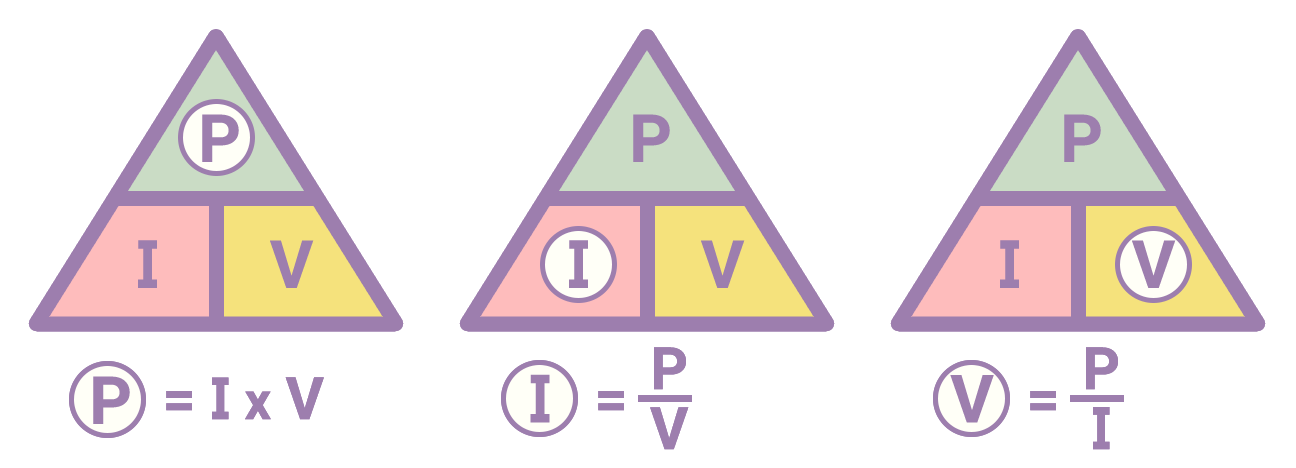Card

Triangle of Power
This strategy helps students analyze the relationships among three variables, where one is a product of the other two.
Triangle of Power
Summary
The Triangle of Power is a variation of the Ohm’s Law Triangle, and it works in the same way visually. The triangle is divided into three sections, using a horizontal line to create a smaller triangle at the top. This smaller triangle represents power (P). A vertical line divides the bottom portion into halves, with one section representing current (I) and the other representing voltage (V). See below for examples of other problems students can solve using the triangle.
Procedure
To solve for one of the variables, cover that letter. Use the remaining variables—and take note of the type of line separating them—to help you write the equation. The variable you covered = the remaining variables either divided or multiplied by each other; for the purposes of the triangle, a horizontal line is a division symbol, while a vertical line is a multiplication symbol.
For example, (top variable) = (bottom-left variable) · (bottom-right variable) OR (bottom-left variable) = (top variable) / (bottom-right variable) OR (bottom-right variable) = (top variable) / (bottom-left variable).
Elementary Fact Family Example: 24 = 6 · 4. The product, 24, would be written at the top. The two factors, 4 and 6, would be written in the bottom-left and bottom-right sections. If a student covered the 24, the vertical line would indicate the multiplication of 4 and 6. If a student covered the 4, the horizontal line would indicate the division of 24 by 6.
Electricity Example: V = R · I. The product, V (voltage), would be written at the top. The other two variables, R (resistance) and I (current), would be written in the bottom-left and bottom-right sections. If a student wanted to solve for resistance, they would cover the R and find the remaining variables to be V and I separated by a horizontal line. The horizontal line indicates division, so R = V / I. If a student wanted to solve for voltage, they would cover the V and find the remaining variables to be R and I separated by a vertical line. The vertical line indicates multiplication, so R · I = V.
Chonowski, K. (2017). Ohm's Law and the Basis of Resistor Technology. Arrow Electronics. https://www.arrow.com/en/research-and-events/articles/understanding-ohms-law The Amazing World of Electronics Admin. (2021). Ohms Law and Power. The Amazing World of Electronics. https://elamazing.com/2021/03/18/ohms-law-and-power/




